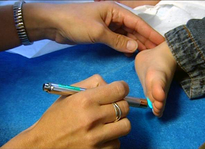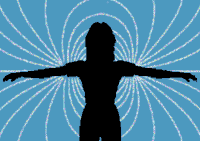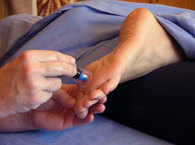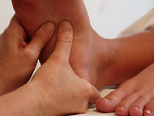Reflexology and chromatherapy

Light is responsible for turning on the brain and the body. Light enters the body through the eyes and skin. When even a single photon of light enters the eye, it lights up the entire brain. This light triggers the hypothalamus, which regulates all life-sustaining bodily functions, the autonomic nervous system, endocrine system, and the pituitary (the body's master gland). The hypothalamus is also responsible for our body's biological clock. It also sends a message, by way of light, to the pineal organ, which is responsible for releasing one of our most important hormones, melatonin. The release of melatonin is directly related to light, darkness, colors, and the Earth's electromagnetic field. This necessary hormone affects every cell in the body. It turns on each cell's internal activities, allowing them to harmonize with each other and nature. The pineal gland is believed to be responsible for our feeling of oneness with the universe and sets the stage for the relationship between our inner being and the environment. If that relationship is harmonious, we are healthy, happy, and feel a sense of well-being. An imbalance in this relationship makes itself known in the form of disorders or disease in our physical, mental or emotional states. (from "A Critical Analysis of Chromotherapy and Its Scientific Evolution" by Samina T. Yousuf Azeemi* and S. Mohsin Raza, Oxford University Press, 2005)
COPYRIGHT by Dr. A. Virgili ReflexologyStudio - All rights reserved



